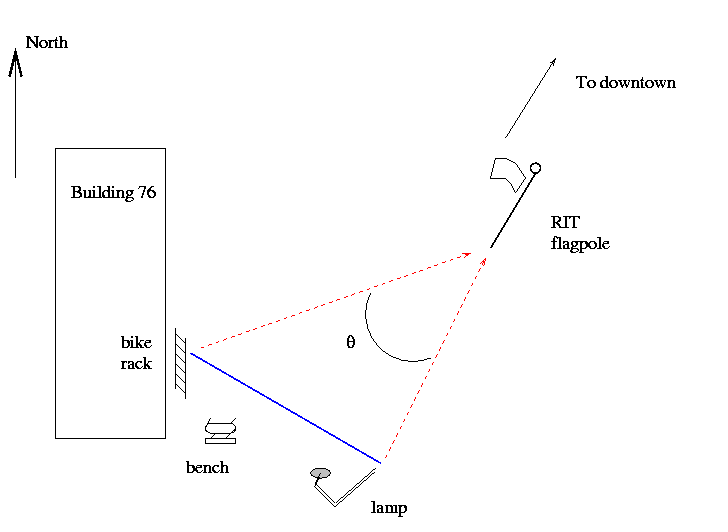
 Copyright © Michael Richmond.
This work is licensed under a Creative Commons License.
Copyright © Michael Richmond.
This work is licensed under a Creative Commons License.
Due Monday, Apr 17, 2000, at the beginning of class
Your job this week is to use parallax to measure the distance from a bench outside Building 76 to the official RIT flagpole.
Go to the main entrance of Building 76. You will find a bicycle rack to the left of the main doors, and a bench a bit further to the left. Your job is to measure the distance from this bench to the official RIT flagpole, which is visible beyond the parking lots to the North-East.

If you stand under the lamp next to the walkway to Building 7, and look towards the flagpole, you will see in the distance three skyscrapers in downtown Rochester. The tallest of the three is a dark building which appears furthest to the right (the others are a shorter building in the middle, and a tall, light-colored building on the left). Use this tall, dark building as a reference.
You will need to devise some method of measuring angles between two distant objects, in units of degrees. If you can't think of a way to measure angular distances, visit me during my office hours and ask.
Now, calculate the distance to the flagpole by following these steps.
Look at your result -- does it make sense? Can you think of some way to check the estimated distance? If so, go ahead and check it. How accurate was your calculation?
What is the uncertainty in your measurement of the baseline distance? What is your uncertainty in the measurement of angles? Which type of measurement leads to a greater uncertainty in the final result? How could you improve the measurement?
Last modified by MWR, April 12, 2000
 Copyright © Michael Richmond.
This work is licensed under a Creative Commons License.
Copyright © Michael Richmond.
This work is licensed under a Creative Commons License.